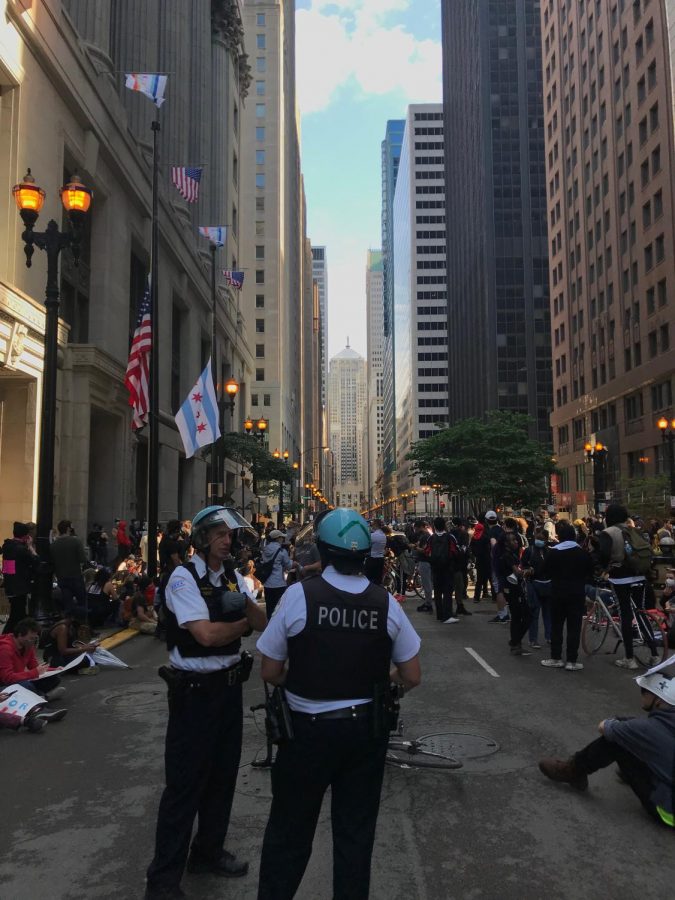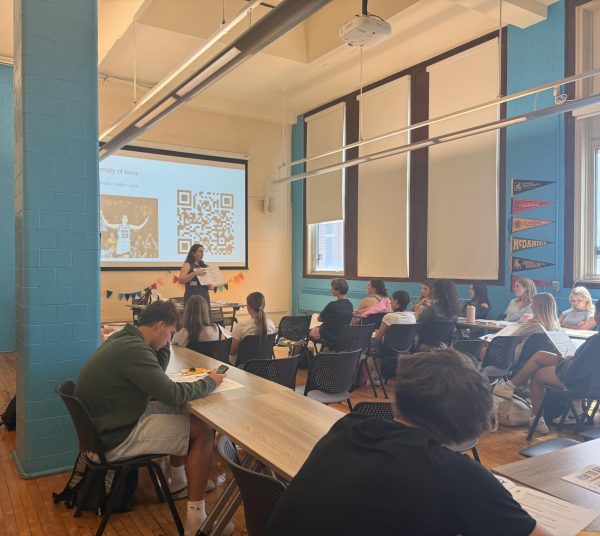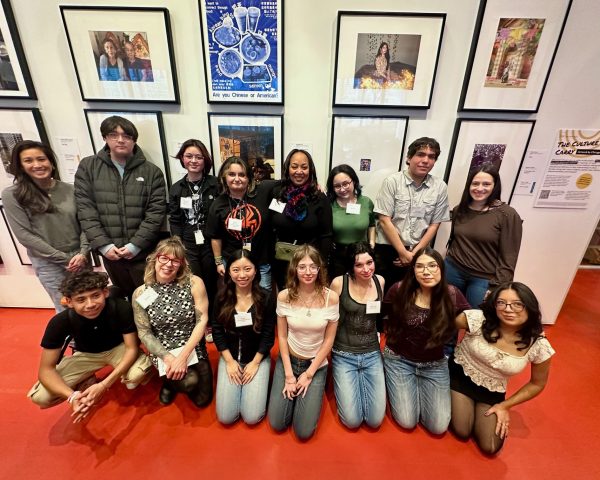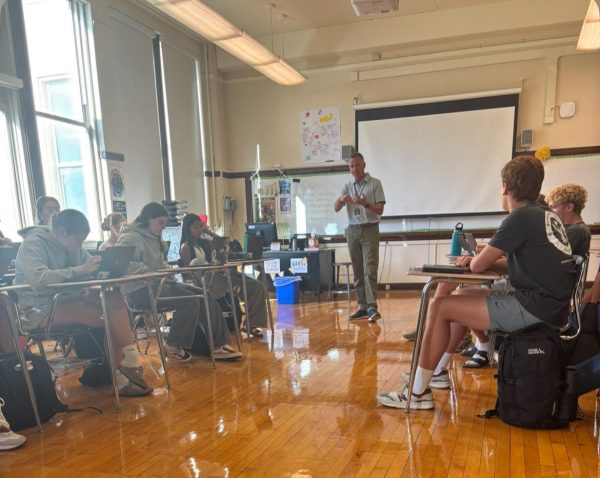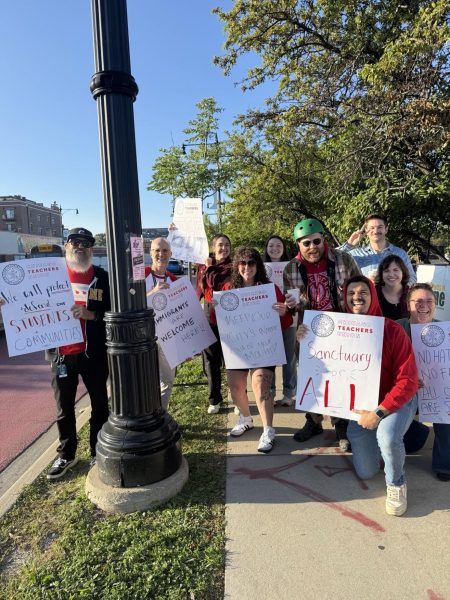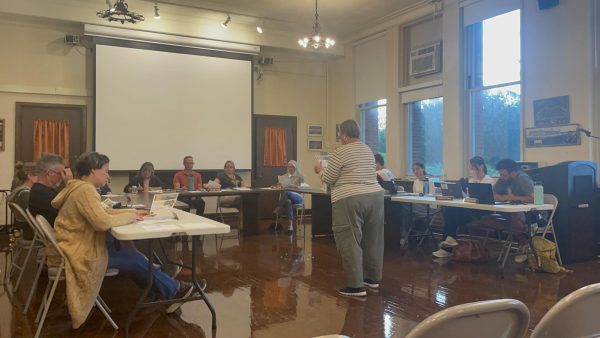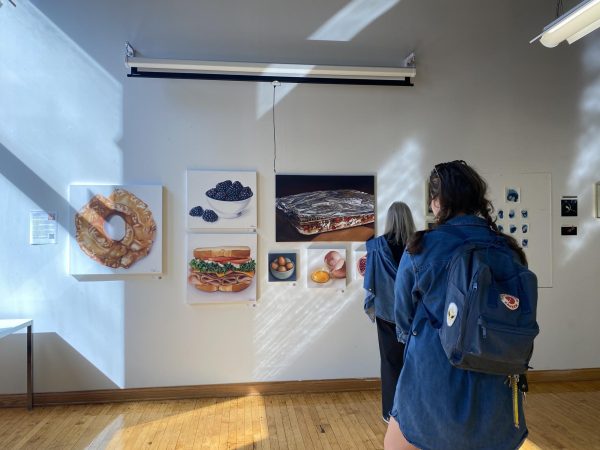Riots and peaceful protests: How Chicago responds to the death of George Floyd
Police officers converse while protesters regroup outside of City Hall after marching from the Harold Washington Cultural Center on 47th Street, June 1, 2020.
Chants of “This is not a riot, this is a demonstration” resounded through Chicago streets on June 1 as a group of approximately 150 protesters peacefully marched at least eight miles from the Harold Washington Cultural Center at 47th and King Drive to north of the Moody Church at LaSalle and North.
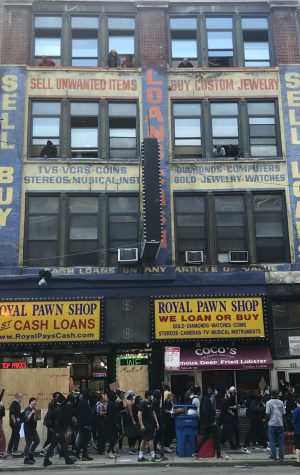
This peaceful protest, organized by the youth group Fourtune House, had four clear goals, according to a printed hand-out: that all arrested protesters be released and any acquired charges be dropped, police badges be visible and body cams be turned on at all times, there be no suspension of public transportation and above all, that justice be delivered.
The non-violent aspect was a hallmark of the protest; the event’s flyer read, “This is not a riot,” and when supporters in a passing car used their palms to hit a police vehicle, an organizer approached the supporters’ car and said, “Stop, stop. We did not come here to do that.”
Despite many peaceful protests against police murder and brutality in the wake of George Floyd’s killing by police, including one with thousands of participants at Wrigley Field on June 2, violence against property has been prevalent across the Chicagoland area. According to the Sun-Times, weekend looting occurred on the West and South Sides, the West Loop and South Loop, River North, Downtown, and Lombard and North Riverside, among other suburbs and Chicago neighborhoods.
The public’s reception of the theft and property damage has been conflicted. A charter school teacher from Roseland who was present at Monday’s demonstration said that though she does not agree with the looting, she understands why it is happening.
“I think the looting is stupid. I think it is counterproductive. I think people are being opportunist,” she said. “But you also have people that have been unemployed for months. You have people who can’t afford these things.”
She added, “I think when you remove hope from a community for generations and generations and generations, this is what you get.”
Lane student Daniel Velazquez, Div. 161, who attended Saturday’s Downtown protest, said that change cannot always come about peacefully.
“Change isn’t going to always happen in a pretty way. In fact, the most significant change is almost always born out of violence,” he said. “This country was founded because white men felt oppressed by a tyrannical government and sought freedom. Why is it that black men, women and children cannot seek that same freedom for themselves from a government that has oppressed them for its entire existence?”
In response to Friday and Saturday’s protests, which involved both peaceful and violent demonstrations, Mayor Lightfoot instituted an indefinite citywide curfew from 9 p.m. to 6 a.m. on May 30 and organized a perimeter around downtown, as well as restricted usage of several thoroughfares. The CTA suspended Loop service on both buses and trains, Pace suspended overnight operations and trips to Downtown and Metra suspended services on both Monday June 1 and Tuesday June 2. Additionally, CPS suspended grab-and-go meal pick up for June 1, though, after public outcry, announced that meal pick-ups would resume on June 2.
Whether such large demonstrations should be held during a pandemic has also come to the fore.
Velazquez acknowledged the health risk — and that black people are more likely to contract and succumb to the coronavirus — but said he believes that that shows the salience of racial justice.
“The continued protesting and riots in spite of this risk still shows how important it is,” Velazquez said. “I think what people realize is that COVID-19 is a threat now, but the United States Government has been an active threat to black men, women and children for nearly 400 years and they see that as being the most significant threat.”
“[The coronavirus] isn’t really going to stop us because it didn’t stop the police officer from killing George Floyd, so at the end of the day, we have to do what needs to be done, but by taking the necessary precautions,” said Auyanah Bingham-Cole, Div. 081.
Despite precautions that protesters may take, experts contend that large demonstrations are not completely safe, according to The New York Times.
“Gatherings of thousands of people will inescapably carry risk: Shouting, panting and yelling slogans can accelerate the production of respiratory droplets that transmit the virus. The aggressive police response in many cities may also be increasing transmission,” The Times reported.
“Tear gas and pepper spray provoke secretions from the eyes, nose and mouth, and induce coughing; police efforts to corral protesters in tight urban corridors reduce the distance between people; and jailing protesters expands the potential for the virus to spread,” according to The Times.
Looting, though perhaps the result of desperation wrought by the pandemic and systemic oppression, has real consequences for the people who reside in the affected communities. Residents with SNAP (Supplemental Nutrition Assistance Program, otherwise known as food stamps) benefits — who are primarily black — for example, can only shop online at Walmart and Amazon, and thus are hurt most by brick and mortar store closures in the wake of or in preparation for riots and looting: they are unable to access the necessary resources that the damaged stores would have provided.
For instance, two of the three grocery stores in the primarily black Oakland and Bronzeville neighborhoods on Chicago’s South Side — Mariano’s and Walmart Neighborhood Market — are closed indefinitely to address damage done by looters.
Given the aforementioned impacts on public transportation, highways and streets, it is also increasingly difficult for people to maneuver to areas with open stores.
The economic burden is not only borne by consumers who are unable to acquire necessary goods, but also by businesses that have already suffered financially because of the coronavirus lockdown, and that are now unable to open as scheduled on June 3.
Though the destruction is troubling to watch, Velazquez said he believes it is in service of a larger goal.
“Obviously it is heartbreaking to see small stores suffer. However, I think store owners are aware this is bigger than them. The 100-year-old camera store which got looted was a terrible thing to see, but the owner said he was ‘angered about what started it,’” Velazquez said. “I think that sums it up well — it’s heartbreaking to see but is contributing to the overall goal. People need to start looking at what has caused an entire nation to loot corporate and local businesses. That’s the question that’s not being asked enough, but which has a very clear answer.”
Though there is widespread disagreement on protesters’ methods, and even whether looters are entirely separate from demonstrators, they seem to have been effective, at least in some respects.
In a June 2 address, Mayor Lightfoot described riots as “the products of a system of violence buried deep in our institutions, that must be rooted out.”
To remedy these systemic problems, Lightfoot unveiled plans to adjust police training so officers are aware of the history of the neighborhoods they serve, “[mandate] crisis intervention and procedural justice training for all officers,” and “[establish] a new recruit program on police-community relations and community policing with views from the community about what works,” according to the address.
She also plans to dedicate $10 million to supporting businesses damaged in recent protests, “with an equity weighting that focuses on South and West sides.”
“This is just a start,” Lightfoot said, “not the end of our journey for police reform and accountability.”
According to Sally Walsh, Div. 079, protests must continue until there is concrete change.
“I’m hoping this won’t die down until her office shows actual proof,” she said. “[Lightfoot said] that they were giving money to help black and brown businesses, which I think is an amazing step in the right direction, but there’s still a lot more to do.”
Your donations directly fund the Lane Tech student journalism program—covering essential costs like website hosting and technology not supported by our school or district. Your generosity empowers our student reporters to investigate, write, and publish impactful stories that matter to our school community.
This website is more than a publishing platform—it's an archive, a research tool, and a source of truth. Every dollar helps us preserve and grow this resource so future students can learn from and build on the work being done today.
Thank you for supporting the next generation of journalists at Lane Tech College Prep!

Naturally having harnessed the wisdom that comes with age, Finley, now a senior in her third year with The Champion (formerly The Warrior), spends her...

